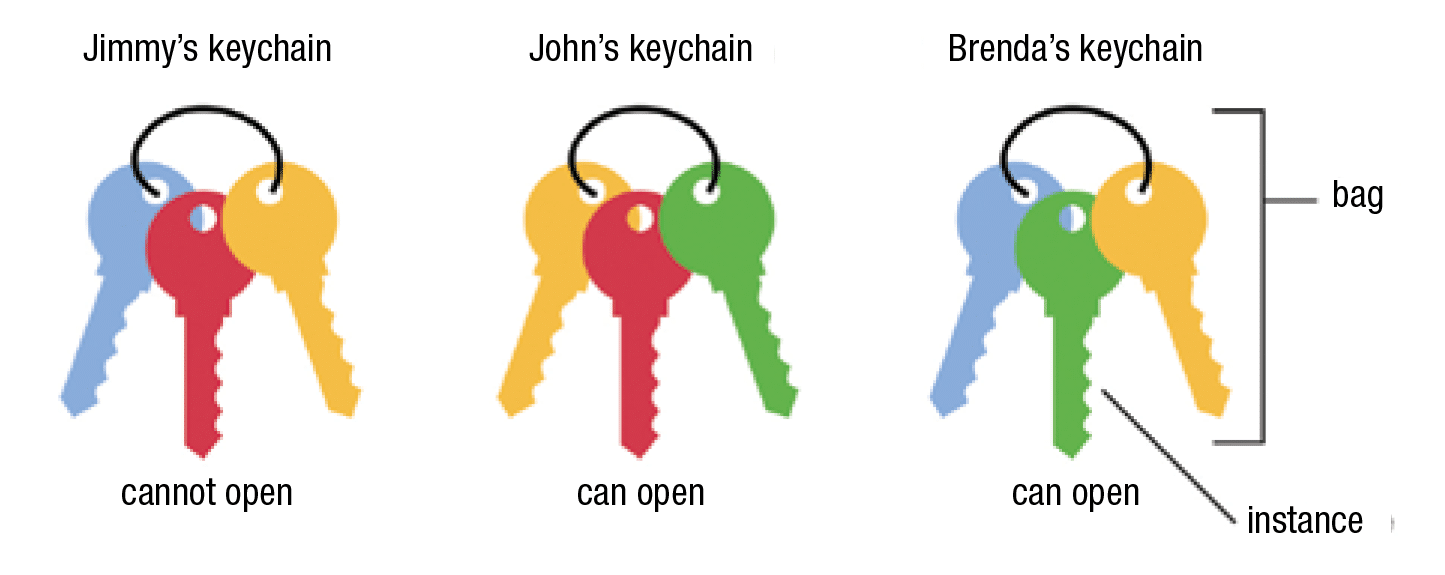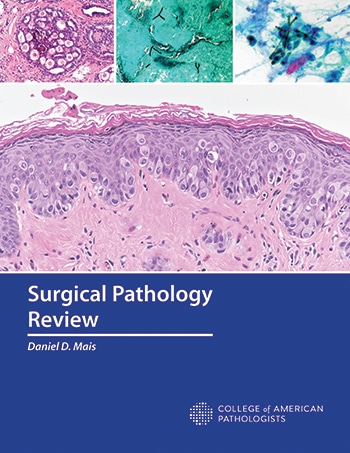December 2021—There are success stories. There are overnight success stories. And then there are things that just seem to happen overnight—minus the success. In the midst of chronic discontent over the use of a race coefficient in equations for estimating glomerular filtration rate, one San Francisco hospital sought to make a change. The hope was to help end disparities in health care, such as lower kidney transplantation rates in Black people with chronic kidney disease. The change at Zuckerberg San Francisco General Hospital was pushed by what Neil Powe, MD, MPH, MBA, calls “a very small group of faculty and trainees lobbying the lab, unbeknownst to others.” The lab reported two values, using the eGFR equation with and without the race coefficient, but assigned “high muscle mass” and “low muscle mass” to the two values as a way to step around the troubling race component. Dr. Powe, the hospital’s chief of medicine, doesn’t mince words when he considers how the change was made. “And it stereotyped ethnic groups even more,” he says.
Read More »2021 Issues
MMR, MSI testing guideline nears finish line
December 2021—No single assay can capture all cancer patients with DNA mismatch repair deficiency, and in determining a patient’s eligibility for immune checkpoint inhibitor therapy, assays for MMR deficiency, microsatellite instability, and tumor mutation burden should not be considered interchangeable.
Read More »Tight and terrible: Lab leaders on budgets and staffing
December 2021—The staffing crisis lives on, despite labs having plans of all kinds in place to alleviate the shortage. “It’s the only thing we’re talking about,” Ochsner Health’s Greg Sossaman, MD, said on Nov. 2 when members of the Compass Group met by Zoom. SARS-CoV-2 testing and test supplies and vaccination are “taking a back seat” to staffing, he said.
Read More »DELFI approach as ‘pretest’ in early cancer detection
December 2021—A cost-effective liquid biopsy focused on analyzing genomewide fragmentation profiles in cell-free DNA has been shown in proof-of-concept studies to detect early-stage lung and other cancers.
Read More »Medicare adopts new clinical consult billing codes
December 2021—Pathologists will have a new set of Current Procedural Terminology codes to use for reporting pathology clinical consultation services, beginning Jan. 1, 2022. These codes, which the CAP developed through its advocacy work with the American Medical Association CPT editorial panel, were published in the final 2022 Medicare physician fee schedule on Nov. 2.
Read More »CAP accreditation withdraws ANP.10039 from checklist
December 2021—The CAP has decided to temporarily withdraw the anatomic pathology checklist requirement ANP.10039 (Total Fixation Time) from the 2021 checklist edition, and this requirement will no longer appear in customized checklists provided to laboratories and inspectors using the 2021 edition.
Read More »AMP case report: Identification of encephalomyocarditis virus using metagenomic NGS in a patient with acute febrile illness
December 2021—Clinical metagenomic next-generation sequencing (mNGS), the comprehensive analysis of microbial and host genetic material (DNA and RNA) in patient samples, is increasingly available in clinical laboratories. At present, for various reasons including test complexity, cost, and turnaround time, this technology is generally limited to difficult-to-diagnose conditions where conventional microbiological testing methods may not lead to a definitive diagnosis in selected patients, such as those with meningoencephalitis of unknown etiology.
Read More »Urinalysis: Efficiency, utility, and the ‘movement in the field’
December 2021—Four experts met on an Oct. 12 call to talk with CAP TODAY about urinalysis—the newest platforms, what labs need, labor solutions. CAP TODAY publisher Bob McGonnagle asked the questions. Providing their perspectives were Matthew Rhyner, PhD, MBA, Beckman Coulter; Jason Anderson, MPH, MT(ASCP), Sysmex America; Megan Nakashima, MD, Cleveland Clinic; and Keri Donaldson, MD, MSCE, Solvd Health and Penn State. Here’s what they had to say.
Read More »From the President’s Desk: Leaders by nature
December 2021—When I became a pathologist more than 20 years ago, I never imagined I would have the opportunity to serve as chief medical officer at a hospital. But I can see from my new position how a background in pathology has prepared me for hospital leadership. In fact, the very traits that led us to become pathologists are the ones that make so many of us natural leaders. We are nimble thinkers who can simultaneously appreciate the big picture and the tiny details. Likewise, we can think concurrently about population health and individual patients. Our ability to see and understand these perspectives so clearly is a huge advantage. Because our specialty touches many different aspects of medicine, we are comfortable interacting with all segments of the health care system—from operative services and radiology to the emergency department, medical wards, and ambulatory setting.
Read More »Clinical pathology selected abstracts
December 2021—Alzheimer disease is characterized by extracellular amyloid-β deposits, tau tangles, neuronal death, and extensive neuroinflammatory changes. Genetic studies have revealed the importance of gene variants that increase the risk for developing the disease.
Read More »Anatomic pathology selected abstracts
December 2021—It is unclear whether HER2+ tumors expressing estrogen receptor and progesterone receptor—that is, triple-positive breast carcinomas—show unique morphologic and clinical features and response to neoadjuvant chemotherapy.
Read More »Molecular pathology selected abstracts
December 2021—Advances in sequencing technologies, such as next-generation sequencing, have yielded many insights into the genomic landscape and clinical import of molecular findings in myelodysplastic syndromes and other myeloid neoplasms with myelodysplasia (MN).
Read More »Newsbytes
December 2021—Like death and taxes, cyberattacks targeting health care organizations are a certainty, but taking proactive breach mitigation measures and developing a thorough response plan can lessen, or even prevent, a devastating blow.
Read More »Q&A column
December 2021 Q. We use the CAP Competency Assessment Program to create quizzes to satisfy the problem-solving element of the CAP’s competency assessment requirements. Is there a requirement to create a new quiz each year or can the same quiz be given every year? Is it OK to use the same quiz for the initial competency and the annual competency? Read answer. Q. Are there red blood cell parameters, such as RBC count or mean corpuscular volume, that can affect a platelet estimate? When determining a platelet estimate, should we always look at the same area of the slide regardless of the patient’s RBC, hematocrit and hemoglobin levels, and indices results? Read answer.
Read More »Put It on the Board
December 2021—In the COVID-19 pandemic and future pandemics, the existing expertise of clinical laboratories should be taken advantage of and labs should be enabled to validate and offer robust clinical assays, say the authors of “The Role of Clinical Laboratories in Emerging Pathogens—Insights from the COVID-19 Pandemic,” published Oct. 29 in JAMA Health Forum (2021;2[10]:e213154).
Read More »A sizable shift in CNS tumor classification
November 2021—Much has changed since the last WHO classification of central nervous system tumors was published five years ago. Case in point: When the group of authors met in Utrecht, the Netherlands, in late 2019, everyone anticipated two more WHO meetings in Europe to work further on the 2021 classification. Arie Perry, MD, a coauthor on both classifications, says the group photo was cheery. “Everybody was smiling.” The later trips to Europe were canceled because of the pandemic and the group met instead by Zoom. “Now everybody looked grumpy,” he says of a screen shot. Fortunately, “We got everything done, even if it wasn’t quite as pleasant,” says Dr. Perry, professor of pathology and neurological surgery, Department of Pathology, Division of Neuropathology, University of California, San Francisco. The result is the latest WHO classification, which offers dramatic changes of its own. “I’m really excited about the new WHO,” he says. “At first it takes a little getting used to”—like, say, a face mask—“but I think it’s another major advance, just like we had last time.”
Read More »New hope for lab data interoperability
November 2021—Interoperability, a problem of long standing in health care, has a new push and new prospects. Interoperability has become a front-burner issue because it has become increasingly urgent to bring the standardized communication of health care data up to speed.
Read More »Compass Group members on test pre-approvals, staff search and strategies
November 2021—Flexible scheduling to suit family life and new “lab associate” roles—two solutions in progress or in place in labs wrestling with the staffing shortage. That and precision medicine test pre-approvals and utilization were some of what Compass Group members talked about on Oct. 5 in a virtual roundtable led by CAP TODAY publisher Bob McGonnagle.
Read More »Latest checklist takes quality management to next level
November 2021—In the latest edition of the laboratory general checklist, released in September, the requirements of the CAP Accreditation Programs have been edited to be more aligned with CAP 15189 (ISO 15189) accreditation requirements.
Read More »Lab analysis in diabetes — a preview of what’s to come
November 2021—The guidelines for laboratory analysis in the diagnosis and management of diabetes mellitus are being revised and will be released next year. In a virtual session at the AACC meeting in September, laboratorians got a look at some of the recommendations to come.
Read More »For genomic testing, a homegrown software solution
November 2021—At NorthShore University HealthSystem in suburban Chicago, a homegrown bioinformatics solution is the “secret sauce” that powers the health system’s personalized medicine program, says Kamalakar Gulukota, PhD, MBA, director of NorthShore’s Center for Bioinformatics and Computational Biology.
Read More »AMP case report: A patient with an unexpected cancer predisposition syndrome—somatic tumor mutation testing and germline mutation testing complement each other
November 2021—Molecular analysis of advanced stage tumors has become the gold standard for identifying potential targetable mutations with high sensitivity, even in limited size tissue samples. However, when only tumor tissue is sequenced, it is difficult to differentiate between somatic mutations in the tumor cells versus constitutional (germline) mutations.
Read More »Security in the cloud leads off in LIS exchange
November 2021—Cybersecurity and the cloud, COVID care gaps, and lab consolidation were among the topics CAP TODAY publisher Bob McGonnagle talked to LIS vendors and Toby Cornish, MD, PhD, about in a Sept. 20 virtual roundtable. A return to on-site trade shows, too, came up: “I do miss walking the vendor floor. I feel like I’m out of touch with what the developments are,” said Dr. Cornish of the University of Colorado Anschutz Medical Campus.
Read More »From the President’s Desk: Keeping the truth
November 2021—In the past two years we have seen the lethal effect of a lack of trust in science. As physicians, pathologists, and fellows of the College of American Pathologists, our duty now as always is to prevent harm, the threat of which comes from mistrust and misinformation. It has always been our role to be revealers of truth, keepers of truth, and producers of clear, reliable information. Our profession and the entire CAP are based on the idea that there is a single truth that can be found through a laboratory value—a truth about a patient’s pathophysiology at a moment in time. This belief that there exist objective truths in medicine is fundamental. In fact, if the laboratory were not a reliable source of truthful information, then pathologists would have a much diminished role, if any at all, to play in clinical medicine. With the truth, pathologists are incredibly important. Without it, much less so. The founders of the CAP understood that.
Read More »Clinical pathology selected abstracts
November 2021—Detecting SARS-CoV-2 in deceased patients is important when considering safety measures for preventing infection during postmortem examinations. Rapid antigen tests are approved for testing and are widely used to mitigate the spread of the virus.
Read More »Anatomic pathology selected abstracts
November 2021—Metastasis to the thyroid gland is a rare occurrence that may pose a diagnostic challenge. The authors reported on the clinicopathological features, immunoprofile, molecular alterations, and outcomes of 30 patients with thyroid metastases who were treated at Memorial Sloan Kettering Cancer Center from 2003 to 2019.
Read More »Molecular pathology selected abstracts
November 2021—The standard-of-care treatment for muscle-invasive bladder cancer is neoadjuvant chemotherapy followed by radical cystectomy. Approximately 35 percent of patients who receive neoadjuvant treatment will achieve pathologic complete response (pCR).
Read More »Pathology informatics selected abstracts
November 2021—When the COVID-19 pandemic struck, many pathology training programs scrambled to formulate a plan to teach their pathology residents in a physically distanced learning environment. Using double- or multi-headed optical light microscopes, even with plexiglass barriers, is not ideal because they do not permit physical distancing. Many training programs leveraged digital imaging technology to continue teaching microscopy during the pandemic. Pathology departments that could not afford whole slide imaging for this purpose sometimes employed the less expensive option of dynamic virtual microscopy (DVM). A DVM platform includes a digital camera mounted to a light microscope and videoconferencing software so an educator can stream a slide image to one or more remote learners.
Read More »Newsbytes
November 2021—The following is an edited excerpt of the article “Attention-based deep multiple instance learning,” written by Jonathan Glaser, a recent graduate of the computer science and biotechnology master of science degree programs at New York University Tandon School of Engineering, in Brooklyn. The excerpt delves into how aspects of artificial intelligence can transform health care, and pathology in particular. To read the full article, go to https://tinyurl.com/AI-based-learning.
Read More »Q&A column
November 2021 Q. I am a nurse in a cardiac cath lab that performs point-of-care testing, including for activated clotting time. At my hospital, the POC testing coordinator only allows other cath lab staff, usually nurses, to use POC testing equipment if they have a copy of their diploma. Can staff who have proof of licensure (such as from the American Registry of Radiologic Technologists) but do not have a copy of their diploma be authorized to use POC testing equipment? Read answer. Q. I recently joined a hospital laboratory that verifies reagents lot to lot with patient samples using a percentage difference of 10 for all parameters. The hospital lab where I previously worked used a CLIA allowable-error percentage. Is 10 percent allowable error acceptable for reagent lot-to-lot verification for all parameters? Read answer.
Read More »Put It on the Board
November 2021—Roche has entered into separate agreements with PathAI and Ibex Medical Analytics in which the companies will jointly develop embedded image analysis workflows for pathologists.
Read More »Results release: new steps under new rules?
October 2021—Neither pathologists nor laboratories should panic over the new 21st Century Cures Act rules making laboratory results immediately accessible to patients, pathology leaders agree. Most laboratories already release results to electronic health records and those results are made available in patient portals, and the Cures Act will require little change in how labs send results to EHR systems. But the rules, which took effect April 5, do come with some complexities to navigate. By passing the Cures Act in 2016, Congress aimed broadly to increase interoperability across EHR platforms and to ensure that patients have full, portable, and cost-free access to their health care information. Of most direct relevance to pathology is the Cures Act’s information blocking or open notes rule, mandating that lab report narratives and pathology report narratives, along with six other categories of clinical notes, be available without delay to patients in different electronic formats, including smartphones and secure online portals.
Read More »Parsing the role of race in Alzheimer’s biomarkers
October 2021—It’s not quite six degrees of Kevin Bacon, but the connection between Alzheimer’s disease biomarkers and equity in medicine is real (and far more important). It’s a trail researchers have been following for some time, but which has gained more prominence with the recent approval of a new drug for treating the disease (aducanumab) and the acknowledgment of racial disparities in CSF amyloid and tau biomarkers and their associated cutoffs.
Read More »AST and safety at core of microbiology checklist changes
October 2021—By Jan. 1, 2024, laboratories must use current breakpoints to interpret antimicrobial minimum inhibitory concentration and disk diffusion test results, according to a new requirement in the latest edition of the CAP Accreditation Programs microbiology checklist, released Sept. 22.
Read More »Up close on clonal hematopoiesis in cfDNA testing
October 2021—Clonal hematopoiesis is a significant biological phenomenon and denotes presence of mutations in bone marrow stem cells in the absence of a hematologic malignancy.
Read More »Molecular or morphology? Challenges in pathologic diagnoses
October 2021—Recent molecular genetic advances have dramatically expanded diagnostic options, thus revolutionizing the diagnosis of many tumor types, especially those of soft tissue and bone. Advances in the discovery of molecular alterations underlying neoplastic pathogenesis have also provided insights into novel therapeutic targets and prognostic biomarkers. These improvements have led to the reclassification of a growing list of previously established tumor types, resulting in significant challenges for practicing pathologists, as exemplified herein.
Read More »‘Scary situation’—lab leaders on staffing and COVID
October 2021—Surge, supplies, staffing. Eighteen months into the pandemic, the story remains similar. Even where laboratory salaries have been bumped up or sign-on bonuses have been in place to strengthen the workforce, Compass Group members report little to no success. And on supplies: “Every week we cross our fingers and toes to see what arrives in the door, how to disperse that through the systems, and how to continually educate the physicians on appropriate use of that limited resource,” says Judy Lyzak, MD, MBA, of Alverno Laboratories. She and other laboratory leaders of the Compass Group met virtually Sept. 6 to share their latest. Of the confluence of problems laboratories face, one said: “I have never seen anything quite like this.”
Read More »Detecting myeloid malignancy minimal residual disease
October 2021—Detecting leukemic cells for post-treatment monitoring in normal karyotype acute myeloid leukemia is challenging, but new approaches to minimal residual disease monitoring may make it increasingly possible in the clinical laboratory, David Wu, MD, PhD, said in an AMP webinar he presented recently on myeloid malignancy minimal residual disease detection.
Read More »Panel weighs in on practices, pressures in heme labs
October 2021—Rules, slide reviews, test ordering, and provider education were part of the conversation when CAP TODAY publisher Bob McGonnagle convened a hematology-focused virtual roundtable in late August. Workforce problems too: “We have a bigger exodus now and our pipeline is smaller,” said Eric D. Hsi, MD, of Wake Forest University.
Read More »From the President’s Desk: Welcome home
 October 2021—I was born into the home of medicine. With a father who was an obstetrician/gynecologist and a mother who was a nurse, there was virtually no separation between our home and medical practice. And while I value how much medicine has shaped my life, I should probably note that my health-care–focused upbringing was little consolation to the parents of my third-grade classmates when I brought in a human placenta for show and tell and delivered some unwanted birds-and-bees education in the process. While medicine has always felt like home to me, as a pathologist, the CAP has become my home as well. This organization has given me a sense of belonging and tremendous opportunity. The first CAP committee I served on was the Cytopathology Resource Committee. I had the privilege of attending the historic Bethesda meeting where we determined how Pap tests would be reported going forward. That system is still in place today.
October 2021—I was born into the home of medicine. With a father who was an obstetrician/gynecologist and a mother who was a nurse, there was virtually no separation between our home and medical practice. And while I value how much medicine has shaped my life, I should probably note that my health-care–focused upbringing was little consolation to the parents of my third-grade classmates when I brought in a human placenta for show and tell and delivered some unwanted birds-and-bees education in the process. While medicine has always felt like home to me, as a pathologist, the CAP has become my home as well. This organization has given me a sense of belonging and tremendous opportunity. The first CAP committee I served on was the Cytopathology Resource Committee. I had the privilege of attending the historic Bethesda meeting where we determined how Pap tests would be reported going forward. That system is still in place today.
Clinical pathology selected abstracts
October 2021—Pathologists are well suited to educate patients and their caregivers about laboratory results so these individuals can better understand diseases and make informed treatment decisions. Pathologists from four institutions involved in this study participated in programs focused on patient and family-centered care.
Read More »Anatomic pathology selected abstracts
October 2021—Squamous cell carcinoma is the most common malignancy of the anal canal and is strongly associated with human papillomavirus (HPV) infection. Characteristic genomic alterations have been identified in anal squamous cell carcinoma (SqCC), but their clinical significance and correlation with HPV status, pathologic features, and immunohistochemical markers are not well established.
Read More »Molecular pathology selected abstracts
October 2021—Transthyretin amyloidosis, also known as ATTR amyloidosis, occurs secondary to accumulation of misfolded transthyretin (TTR) protein in the form of amyloid fibrils. The acquired form of ATTR amyloidosis is referred to as wild-type ATTR amyloidosis.
Read More »Q&A column
October 2021
Q. After naloxone is administered, are opiates still detectable in the body? If so, for how long and in what quantities? Read answer.
Q. Why do proficiency testing specimen results for common immunoassay analytes sometimes vary greatly with different instrument manufacturers and their reagents? Does that mean the patient’s results for the same specimen could vary greatly based on the instrument used? If so, is this acceptable? Wouldn’t the variation in results confuse the clinician and patient? Read answer.
Newsbytes
October 2021—Given Penn Medicine’s reputation for high operational standards, it’s not surprising that the developers of its new Center for Applied Health Informatics set lofty goals for the center: coordinate the efforts of multiple internal technology-related groups to further improve systems institutionwide and position the health system as a global leader in health informatics.
Read More »Put It on the Board
October 2021—The Food and Drug Administration granted 510(k) clearance for use of the MeMed BV test on the point-of-need platform MeMed Key to help providers distinguish between bacterial and viral infections. The technology has been cleared for children and adults.
Read More »In coag collections, every detail counts
September 2021—Rare wine? Delectable. Rara avis? Magnificent. Rare blue-top collection tube? Uh oh. For Richard Marlar, PhD, coming across a non-FDA-approved tube was an unhappy discovery. Dr. Marlar, medical director, coagulation laboratory, University of New Mexico Hospital, says his lab was among the first to encounter one of these rogue tubes, available for purchase on the internet and likely taking wing due to pandemic supply shortages. When the tube arrived for testing, it quickly kindled concerns, says Dr. Marlar. “It’s a tube we had never seen before. It looks like it has a CE mark on it, and the Europeans don’t know anything about it. It has a label on it that suggests it’s FDA approved—but the FDA is not aware of it,” he says, adding that his lab has spoken with the agency. It feels like a “CSI”-tinged moment in a venue that labs would prefer to keep drama-free. It also points to the ongoing need to keep a keen eye on what passes through coagulation laboratories. It’s not so much that the devil is in the details; rather, that’s where accurate results lie.
Read More »Gastric HER2, hsALK to join monitored PT list
September 2021—Beginning next year, CAP-accredited laboratories that perform HER2 immunohistochemistry in gastroesophageal adenocarcinoma or highly sensitive (hs) ALK in non-small cell lung cancer will be required to enroll in proficiency testing for those analytes.
Read More »Metagenomic NGS: More pros than cons?
September 2021—A stem cell transplant patient at Lurie Children’s Hospital in Chicago had a disseminated fungal infection by every clinical criterion, but no conventional method had detected it.
Read More »How to prevail over a crisis using data analytics
September 2021—The pandemic has pelted hospitals and laboratories with wild cards and sometimes thrown wrenches into the works. But the jolts it has delivered to normal institutional operations, forcing new solutions to business and clinical care dilemmas, have also positioned laboratories to help produce stunning new capabilities.
Read More »A preanalytics push in accreditation checklists
September 2021—Taking steps to protect the integrity of specimens is at the heart of new and revised requirements in this year’s edition of the accreditation program checklists, set for release Sept. 22. A CAP team made up of members of the Checklists, Personalized Health Care, and Cytopathology committees collaborated to incorporate into the checklists the evidence-based recommendations set forth in a 2019 article on preanalytics and precision pathology. Many of the new and revised requirements, which are in seven checklists, are aimed at improving the quality of tissue and blood specimens that may undergo molecular testing for patients with cancer. The aim of others is to improve the preanalytic quality of specimens used for all types of testing.
Read More »Salaries, schools, students—all eyes on workforce
September 2021—SARS-CoV-2 spread and the staffing shortage drove the conversation when Compass Group members met Aug. 3 for their monthly call led by CAP TODAY publisher Bob McGonnagle. “Like others, we were seeing problems before COVID, but COVID seems to have kicked it into overdrive,” Steven Carroll, MD, PhD, of the Medical University of South Carolina, said of the shortage. And more long term, it’s time to jump-start training programs, he and others say. The Compass Group is an organization of not-for-profit IDN system laboratory leaders who collaborate to identify and share best practices and strategies. Here is what they shared last month.
Read More »For MammaPrint and BluePrint, the long-term view
September 2021—The latest data on the use of two genomic assays in early-stage breast cancer and at the University of Rochester Medical Center as the pandemic set in were reported in a CAP TODAY webinar presented by William Audeh, MD, and David G. Hicks, MD. Dr. Audeh, medical oncologist and chief medical officer of Agendia, developer of MammaPrint and BluePrint, presented the long-term follow-up results of the MINDACT trial and an age-related analysis, as well as new data on MammaPrint’s use in endocrine therapy decisions.
Read More »From the President’s Desk: Looking back, looking ahead
September 2021—As my term as president of the College of American Pathologists comes to a close, I am both honored and humbled to have been selected by my peers for this position. Over the past two years our organization was presented with the greatest challenge we have ever faced. Because of our phenomenal members and staff, we have accomplished great things even though we worked under the most adverse conditions. We, yet again, backed a horse named CAP. It broke out of the gate well and had to weave through traffic on a bad track, but we are ahead. We made the right bet and I am so, so lucky to have been chosen to be the jockey for this race. Looking back, the COVID-19 pandemic presented our community with relatively sudden and profound changes resulting in a tremendous number of challenges. It has dominated our lives. We should be proud of our accomplishments. We have not only put out many fires and sewn up deep wounds, but we have also set up the College and our fellows for continued success so that we will be able to keep serving our patients well.
Read More »Clinical pathology selected abstracts
September 2021—Colorectal cancer is the third leading cause of cancer death for men and women, with approximately 52,980 deaths projected this year. Although colorectal cancer is most frequently diagnosed in adults between the ages of 65 and 74 years, about 10.5 percent of new colorectal cancer cases will occur in those younger than 50 years of age.
Read More »Anatomic pathology selected abstracts
September 2021—Nivolumab is an immune checkpoint inhibitor approved for treating many types of cancer, including hepatocellular carcinoma (HCC). Liver injury is a known complication in patients treated with nivolumab for nonliver tumors. The morphologic changes to tumor and nontumor liver have not been well-characterized in HCC patients.
Read More »Pathology informatics selected abstracts
September 2021—Chronic myelogenous leukemia is a clonal stem cell disorder driven by the BCR-ABL1 fusion oncogene and accounts for 15 percent of adult leukemias. Patients typically present with abnormalities in their complete blood cell counts with differential classification.
Read More »Molecular pathology selected abstracts
September 2021—More than a year into the COVID-19 pandemic, an essential question remains unanswered: Why do some people infected with SARS-CoV-2 develop severe life-threatening disease or die while others are asymptomatic or have only mild disease symptoms?
Read More »Q&A column
September 2021 Q. What is the ideal collection tube for measuring the level of ammonia in blood? Is a tube containing EDTA suitable?Read answer. Q. Is there a requirement to notify nursing personnel or doctors about each critical value obtained for a patient after the initial occurrence of the critical result?Read answer.
Read More »Newsbytes
September 2021—When Stephen Hewitt, MD, PhD, went down the COVID-19 rabbit hole in early 2020, little did he know about the long-term value of a comprehensive COVID-19 digital pathology repository—and how such a project would come to fill his days and, occasionally, nights.
Read More »Put It on the Board
September 2021—Testing for chronic kidney disease in adults with hypertension and/or diabetes is low in routine clinical care, despite guideline recommendations, write the authors of a study published in Diabetes Care (Alfego D, et al. 2021;44[9]:2025–2032).
Read More »AP lab maps its cyberattack recovery
August 2021—The downtime manual that the anatomic pathology laboratory at the University of Vermont Medical Center maintained in 2020 was never intended to be used for dealing with a cyberattack. In fact, it wasn’t actually a manual. It was a laboratory-wide policy essentially consisting of one instruction to be used in the event of a power failure or short-term IT disruption or other emergency: “Bring everything to a halt.” In anatomic pathology, “Our downtime protocol was: You stop in your tracks,” says dermatopathologist Anne M. Stowman, MD. “For the urgent/emergent specimens, you get out your paper logs, you do paper recording of the cases coming in, and you handwrite your cassettes, your descriptions, your slides.” That would be a bit slower and less efficient, but it would work for brief, temporary outages and disruptions. But the cyberattack that UVMMC experienced in October 2020, cutting off the labs’ access to the medical center’s information technology systems and disabling operations for more than three weeks, was an abrupt wake-up call.
Read More »CSF biomarkers in ‘a new era’ for Alzheimer’s
August 2021—The FDA’s approval in June of a new drug to treat Alzheimer’s disease has incited motley responses, a sort of Grand Tour of emotions and reactions. As with any stormy action, the aftermath becomes clear only over time, during the hard work of cleaning up. What comes next?
Read More »Lab staff shortage calls for speed, money, and more
August 2021—From critical to worse is how two Compass Group members described the lab labor shortage on July 6 when the group spoke with CAP TODAY publisher Bob McGonnagle in another of their monthly virtual meetings. “Things imploded. We’re struggling in every area,” said one.
Read More »Testing for platelet function using whole blood
August 2021—Platelet function testing using platelet-rich plasma is the gold standard, but whole blood platelet aggregation has its advantages, with less risk for preanalytic error among them.
Read More »National patient identifier advocates state their case
August 2021—The iconic Timex slogan “It takes a licking and keeps on ticking” was designed to sell watches in the 1950s and ’60s, but it could just as easily be applied to efforts to repeal the decades-long appropriations ban on a unique national patient identifier—year, after year, after year.
Read More »PGx in transplant medicine: tacrolimus as foundation
August 2021—Pharmacogenetic testing is not standard of care at most transplant centers, nor do the FDA or others mandate it. But “transplant medicine is ripe for observing the benefits of pharmacogenetics,” said Gwendolyn A. McMillin, PhD, D(ABCC), in an AACC virtual session last year.
Read More »AMP case report: Celiac genetic health risk screening by NGS in the family of a child with clinical findings of dermatitis herpetiformis and gluten sensitivity
August 2021—Dermatitis herpetiformis (DH) is an autoimmune skin disorder associated with celiac disease and characterized by pruritic, blistering lesions mainly on the elbows, knees, buttocks, lower back, and scalp. Immunopathogenesis is attributed to IgA TG3 antibody immune complexes in the papillary dermis originating from subclinical celiac disease in the gut. Onset occurs at any age, but DH is diagnosed most often in young adults and rarely in children. Individuals of northern European heritage represent the most frequently affected population for DH, with an estimated incidence reported by the National Organization for Rare Disorders of 75.3 per 100,000 people. First-degree family members of patients with DH are at increased risk for both DH and celiac disease.
Read More »Cytopathology in focus: Reflections on use of Milan System, edition 1: Areas to be explored for edition 2
August 2021—Salivary gland neoplasms (SGN) are a special group of tumors due to the high variation in histologic subtypes that are further complicated by frequent overlapping morphological features. Fine-needle aspiration is a safe, cost-effective, first-line modality for diagnosing SGNs, an integral part of SGN preoperational workup. In 2018, Faquin and Rossi led the effort to standardize the reporting system of salivary gland lesions. Their final product, Milan System for Reporting Salivary Gland Cytopathology (MSRSGC), has had a huge impact on salivary gland FNA practice in the United States and worldwide.
Read More »Cytopathology in focus: At the center of AI implementation in cytopathology
August 2021—Recent advances in the deep learning area of artificial intelligence offer tantalizing opportunities to improve cytology practice. However, aside from the commercially available options for automated screening in gynecologic cytology, systems with applications in cytology have largely been used in research settings only. The article by authors McAlpine and Michelow reviews the approach to developing and validating artificial intelligence algorithms in cytology, from the generation of appropriate cytology data sets to clinical validation of the model.
Read More »From the President’s Desk: A step forward
August 2021—No doubt about it, in-person meetings are coming back. I went from a record-long stretch at home because of the pandemic to attending events all over the country. I hasten to add that my entire family is fully vaccinated, and we were so at our first opportunity. As I write this in July, I just returned from an in-person professional development meeting, and I am reminded that virtual meetings are nowhere near as effective as face-to-face meetings. That’s why I am pleased that CAP21 will be a hybrid meeting this year. It’s a step back to normal and will allow people to engage in the way that’s most comfortable for them as the COVID-19 pandemic continues in our country. It feels good to have the opportunity to come back together. I think one of the many reasons our country is so divided now is that we have been separated from each other for so long. At a recent CAP meeting I attended, there was a disagreement during one particular session. After it ended, everyone involved got together face to face, talked through the issue, and came to a good resolution.
Read More »Anatomic pathology selected abstracts
August 2021—Pseudocarcinomatous squamous hyperplasia within the bone is uncommon and closely mimics well-differentiated squamous cell carcinoma. It arises from cutaneous or mucosal surfaces and grows directly into the bone. The authors conducted a study in which they analyzed a series of 31 pseudocarcinomatous squamous hyperplasia (PSH) cases and discussed the clinicopathologic features that distinguished PSH from squamous cell carcinoma (SCC).
Read More »Clinical pathology selected abstracts
August 2021—The primary target organ of the SARS-CoV-2 virus is the lung. The virus invades endothelial cells through angiotensin-converting enzyme 2 receptors, which are found throughout the body. There are multiple markers of abnormal coagulation and hemostasis activation in patients with COVID-19 that signal a risk of thromboembolic complications.
Read More »Molecular pathology selected abstracts
August 2021—Auditory neuropathy spectrum disorder is a rare, progressive condition affecting a person’s ability to discriminate speech despite being able to respond to sound. The condition is often sporadic and diagnosed in patients with no family history of hearing loss, but it can be heritable.
Read More »Q&A column
August 2021
Q. Is it necessary for a lab to report a corrected sodium level when the glucose level is really high? Studies show pseudohyponatremia can occur due to hyperglycemia. How common is this, and how do we decide which correction factor to use? Is it possible that this is easily overlooked by providers due to comorbidities in patients? Some references say there is a need to correct glucose for each 100 mg/dL increase above 400 mg/dL glucose. Read answer.
Q. Payers are limiting reimbursement for PCR respiratory panels to a small subset of tested pathogens and only with certain indications. Many panels available from manufacturers test for more pathogens than can be reimbursed. What is the best approach to deal with this issue? Should large respiratory panels no longer be offered? If a large panel is performed, should only a limited number of pathogen results be reported, even though the entire panel was performed? Should the entire panel be reported but only a limited number of pathogens billed for? Read answer.
Newsbytes
August 2021—The Office of the National Coordinator for Health Information Technology released last month the United States Core Data for Interoperability version two, or USCDI v2, a standardized set of health data classes and constituent data elements for nationwide, interoperable health information exchange.
Read More »Put It on the Board
August 2021—The Association for Molecular Pathology on July 29 called on all relevant individuals and organizations to support and facilitate the sharing of molecular genetic variant data and offered recommendations.
Read More »Coag issues occupy COVID’s central stage
July 2021—The pandemic’s reach has often been portrayed in shades of red, signaling surging COVID-19 cases across states and countries. Vaccination maps, on the other hand, tend to render progress in more soothing tones, typically in the green family. But in coagulation laboratories, one small portent is colored blue—specifically, blue-top sodium citrate tubes. In recent months, laboratories began voicing concerns about tightening supplies. They’ve spoken with their vendors; some have reached out to new ones. And though no one wants to think about limiting testing if supplies truly become scarce, it wouldn’t be the first time labs have had to steer through these waters. The tubes are a functional symbol of the continued complexities of COVID-19-related coagulopathy, as physicians try to understand and respond to the pathophysiology of infection that leads to a thrombotic event. As the pandemic has churned on, much has started coming into sharper focus. Prepublication persists, but physicians have begun to sort through the past 18 months and, as many have put it, to “do the science.”
Read More »Analytics reframes decisions from bench to C-suite
July 2021—From takeout margaritas to the embrace of remote work, the pandemic upended convention, leaving behind permanent changes that were nowhere on the radar in 2019. In the world of pathology informatics, the new online COVID-19 data dashboards at the Cleveland Clinic illustrate how much the pandemic has raised the profile of data analytics in managing the laboratory.
Read More »Accuracy-Based Programs for ‘bigger dividends,’ better care
July 2021—Proficiency testing is the bedrock of good laboratory performance, but Accuracy-Based Programs are equally important, which is why members of a CAP committee are hoping for 10 labs from each peer group to participate.
Read More »A few years in, a new picture for liquid biopsy
July 2021—Liquid biopsy has entered a more confident era, with two FDA-approved next-generation sequencing assays for comprehensive tumor mutation profiling, evidence of its clinical utility, and broadened patient access.
Read More »Variants, vaccine efficacy, and the tests labs need
July 2021—For SARS-CoV-2, there has to be a plan to sequence locally and collaborate globally, and public health must recognize that hospital-based laboratories have a part to play, says Glen Hansen, PhD, D(ABMM), medical director of microbiology and molecular diagnostics at Hennepin County Medical Center, Minneapolis.
Read More »Lab leaders on growth, labor, and cybersecurity
July 2021—Revenue and growth, cybersecurity, and labor and wage pressures were on minds June 1 when Compass Group members met virtually with CAP TODAY publisher Bob McGonnagle. But perhaps no problem felt heavier than the labor shortage.
Read More »Testing for platelet function using platelet-rich plasma
July 2021—Identifying severe disorders of primary hemostasis is relatively straightforward for most coagulation laboratories, but the more prevalent disorders with less severe bleeding and less overt diagnostic abnormalities are trickier, and platelet function testing using platelet-rich plasma remains the gold standard. Geoffrey Wool, MD, PhD, in an AACC virtual session last year, presented some of his laboratory’s cases to illustrate the use of light transmission aggregometry and a modification called lumi-aggregation.
Read More »AMP case report: MYC amplification identified in an EML4-ALK-positive lung adenocarcinoma with primary resistance to targeted therapy
July 2021—The advent of genomically targeted therapy and immunotherapy has greatly altered the clinical management of advanced non-small cell lung cancer (NSCLC). Molecular testing is recommended for sensitizing EGFR mutations, ALK fusions, ROS1 fusions, BRAF V600E, NTRK fusions, RET fusions, and MET exon 14 skipping alterations.
Read More »Close ties: instruments, middleware, and more
July 2021—Laboratory instrumentation from an IT perspective and as one solution to the labor shortage were the topics explored April 27 in a virtual roundtable of instrument vendors and laboratory medical directors, led by CAP TODAY publisher Bob McGonnagle. Part one of their conversation about core labs was published in the June 2021 issue; part two follows.
Read More »Under one cover: grossing, staging, and reporting
July 2021—CAP Publications released this month Grossing, Staging, and Reporting—An Integrated Manual of Modern Surgical Pathology, edited by Qihui “Jim” Zhai, MD, professor of laboratory medicine and pathology, consultant pathologist, and director of the FISH laboratory, Mayo Clinic Florida. The manual consists of 12 sections—from breast to thorax—and 54 chapters, organized by organ. CAP TODAY asked Dr. Zhai to tell us about the new book.
Read More »From the President’s Desk: ‘Divided we fall’
July 2021—It has been a long time since the American public has been so terribly divided by politics. So many topics seem polarizing in our country right now. As pathologists, we should not allow these forces to fragment us. I fear that if we are not careful, we could find our community pulled apart, and that would be detrimental to those we should most protect—our patients. I’ve been thinking a lot lately about the phrase, “United we stand, divided we fall.” It is well worn but still meaningful. It’s the official motto of the Commonwealth of Kentucky, where I was born. Within the CAP and each state’s pathology society—in my view, the two groups every pathologist should belong to—it is imperative that we stick to the topics that unite us to keep our organizations strong and inclusive. We are all pathologists or soon-to-be pathologists, and we are all physicians. We are united on measures that allow us to better serve our patients and protect our practices. We should not be divided by politics, and there is no room for that in the CAP or state-level pathology societies. I am not saying that we should not individually be politically active or work peacefully in other politically active groups.
Read More »Clinical pathology selected abstracts
July 2021—Pathologists play a key role in molecular and genomics testing, so pathologists-in-training should demonstrate an understanding of genetics concepts and the utility of molecular and genomic testing in patient care. A list of published competencies for training includes determining sample adequacy, ensuring that appropriate molecular tests are ordered, and effectively communicating genomic testing results through pathology reports and interdisciplinary teams.
Read More »Anatomic pathology selected abstracts
July 2021—Microscopic colitis is characterized by chronic watery diarrhea, endoscopically normal findings, and abnormal histology. The disorder is most prevalent in adults. Pediatric cases are rare and may vary in presentation.
Read More »Pathology informatics selected abstracts
July 2021—Despite growing awareness of whole slide imaging, few pathology laboratories have implemented and validated such a digital pathology system for primary diagnosis. Among the barriers to adopting whole slide imaging (WSI) for routine clinical work is the difficulty of justifying the expense, time and effort, and change management involved in deploying this disruptive technology.
Read More »Molecular pathology selected abstracts
July 2021—The accurate diagnosis of malignant pleural mesothelioma is important because of its association with asbestos inhalation and because it is an aggressive tumor with poor outcome despite multimodal treatment. Unfortunately, however, diagnosing malignant pleural mesothelioma is not straightforward. Initial diagnosis often occurs on small biopsies, and the disease has morphologic overlap not only with other neoplasms that affect the lungs and pleura, such as solitary fibrous tumor or synovial sarcoma, but also with reactive conditions, such as reactive mesothelial hyperplasia or sclerosing fibrous pleuritis. While immunohistochemical markers can provide ancillary information, many of them are nonspecific and can lead to diagnostic dilemmas. Sequencing of cancer genes can help in some situations but cannot provide a definitive diagnosis.
Read More »Q&A column
July 2021
Q. Our lab does not have reference ranges established for body fluid manual differentials. Is it acceptable to use ranges from a reference material and include a disclaimer citing the source of the ranges? Read answer.
Q. In our lab, we perform semen analysis and make slides to send out for sperm morphology using Kruger’s strict criteria. We get quite a few results back as swollen sperm head for probable contamination. The reference lab insisted that liquefying agent was added, but when we reviewed the results, the sample was normal, so liquefying agent wasn’t used. What can cause a sperm head to swell, other than liquefying agent? Read answer.
Newsbytes
July 2021—As the role of informatics in the practice of medicine continues to grow, so does the need to move formalized informatics education from the category of luxury to necessity, says Bruce Levy, MD, associate chief medical informatics officer at Geisinger Health System, Danville, Pa., and professor and program director of the clinical informatics fellowship at Geisinger Commonwealth School of Medicine.
Read More »Letters
July 2021—The article about eGFR (“A transparent lens on estimated GFR,” June 2021) reinforces my initial attitude about eGFR: that it is an inaccurate contrived calculation. Testing for the status of a patient’s renal function is information too crucial to be done as a shortcut even though the National Kidney Foundation claims that eGFR is the most accurate way of determining renal function.
Read More »Put It on the Board
July 2021—The FDA in May approved two new targeted therapies for non-small cell lung cancer.
Read More »Higher stakes in systemic mastocytosis
June 2021—Mastocytosis is not for quitters. Not at any point, from considering the possible diagnosis, to doing a complement of stains, to looking for mutations beyond KIT D816V, to being curious about the presence of mast cells even after making a diagnosis of another myeloid disease. Patients have already learned this grueling lesson. They can easily spend years seeking answers before their disease is properly identified. Pathologists can speed up that process—and the time to do so is now, says Tracy George, MD, chief medical officer and incoming president of ARUP Laboratories, and medical director of hematopathology. Notes Dr. George: “There’s some exciting stuff going on with systemic mastocytosis.” New targeted KIT inhibitors appear to be quite effective, including at least one agent for advanced systemic mastocytosis that has been submitted to the Food and Drug Administration. “We anticipate there’s going to be approval by the FDA this summer,” says Dr. George, who’s been involved in the clinical trials for avapritinib (Blueprint Medicines).
Read More »1- or 2-step: Outcomes studied in GDM screening
June 2021—If screening for gestational diabetes mellitus were a dance competition, it might have a contest between quickstep and paso doble as its signature event. That tournament could pit the one-step testing protocol (twice as likely to diagnose GDM) against the two-step testing protocol (significantly easier for pregnant women to adhere to).
Read More »Puzzling out platelet function disorders
June 2021—In an AACC virtual session last December, Catherine P. M. Hayward, MD, PhD, of McMaster University, set out the stepwise approach to testing for platelet function disorders, explained the methods used to assess platelet aggregation response, and reported what most clinical labs do.
Read More »Virtual, blended inspections a sign of the times
June 2021—As COVID-19 restrictions halted traditional laboratory inspections, virtual and blended inspections became the stand-ins, and early adopters say there’s much to like and hold on to post-pandemic.
Read More »pTX and pNX should not be used in tumor staging
June 2021—For the June 2021 release of updates for the CAP cancer protocols and the corresponding electronic cancer checklists used by electronic health record vendors, pTX and pNX will no longer be selectable options for use by pathologists when assigning pathologic staging based on definitive surgical resection (pTNM). This change is coming after extensive discussions with the American Joint Committee on Cancer (AJCC) and with its unanimous endorsement. Why are we making this change?
Read More »Compass group roundtable: ‘Gaps loom large’: labor shortage hitting hard
June 2021—A brief update on SARS-CoV-2 variant testing and then a look at the latest on the laboratory labor struggle. That’s what Compass Group members provided when they spoke May 4 in another of their monthly calls led by CAP TODAY publisher Bob McGonnagle. “We’ve accepted that if we’re going to solve the [labor] issue,” said Sam Terese of Alverno Laboratories, “we’ll have to create the workforce. They’re not coming to us in any other way.” With McGonnagle and Terese were Bob Stallone and James Crawford, MD, PhD, Northwell; Sterling Bennett, MD, MS, Intermountain; John Waugh, MS, MT(ASCP), Henry Ford; Peter Dysert, MD, Baylor Scott & White; Steven Carroll, MD, PhD, Medical University of South Carolina; Stan Schofield, MaineHealth; Gregory Sossaman, MD, Ochsner; Clark Day, Indiana University; Diana Kremitske, MS, MHA, MT(ASCP), Geisinger; Julie Hess, AdventHealth; Terrence Dolan, MD, Regional Medical Laboratory; and Dan Ingemansen, Sanford. The Compass Group is an organization of not-for-profit IDN system lab leaders who collaborate to identify and share best practices and strategies. Here is what they said.
Read More »ED, lab views on point-of-care cardiac troponin
June 2021—Point-of-care cardiac troponin testing got a fresh look last December when an emergency medicine physician and a clinical chemist came together to talk about the use of both conventional POC troponin assays in a high-sensitivity era and high-sensitivity POC troponin testing when it becomes available.
Read More »B- and T-cell neoplasm features and fine points
June 2021—A case of monoclonal B-cell lymphocytosis and a tour of B- and T-cell morphologies were at the heart of a CAP20 virtual presentation on neoplastic lymphocytosis. Kyle Bradley, MD, associate professor of hematopathology and director of surgical pathology at Emory University, spoke last fall on reactive (CAP TODAY, May 2021) and neoplastic lymphocytosis, with Olga Pozdnyakova, MD, PhD, who addressed neutrophilia and monocytosis (CAP TODAY, February and March 2021). Together they took attendees through a morphology-based approach to hematopoietic neoplasms presenting with an abnormal WBC differential.
Read More »Transplant viral monitoring struggles and solutions
June 2021—Testing for viral infections post-transplant is an important part of care for transplant patients because of the risk for infections during immunosuppression. But viral load monitoring suffers from interlaboratory variability for several reasons, and while the problem is greater at higher viral loads, the interlaboratory variability is also present at lower viral loads. Steve Miller, MD, PhD, of the University of California San Francisco, and Joseph Yao, MD, of Mayo Clinic in Rochester, reported the monitoring difficulties, solutions, and new directions last fall in a CAP TODAY webinar made possible by a special educational grant from Roche.
Read More »Next moves for core labs—panel takes stock
June 2021—Pause and restart, or rethink and reorient? That’s the question CAP TODAY publisher Bob McGonnagle put to instrument vendors and James Faix, MD, and David Grenache, PhD, D(ABCC), about COVID and core labs and the instruments in those labs. What impact the pandemic had on them and their customers was a topic of discussion when they met on an April 27 call during which they talked, too, about antibody testing and the proliferation of SARS-CoV-2 testing labs during the pandemic. What follows is part of their conversation. The rest, on IT and the staffing shortage, will be published in July, as will our guide to chemistry and immunoassay analyzers for mid- to high-volume labs.
Read More »From the President’s Desk: Unionization?
June 2021—Several CAP fellows have reached out to me recently about a topic many find controversial: whether pathologists should unionize. Some of this interest stems from concerns about employment models and how pathologists are treated in various situations. Some of it comes from concerns that pathologists are not being compensated appropriately for the risks and responsibilities they bear daily. The COVID-19 pandemic has also fueled increased interest in unionizing among many types of health care workers. According to the U.S. Bureau of Labor Statistics, people who work in health care and social assistance are a little less likely to belong to unions than people in other fields. In 2020, 7.1 percent of workers employed in health care and social assistance were members of unions, compared with 10.8 percent for people in all industries. But the pandemic has led to an uptick in unionizing interest for many in the health care field, from nurses and respiratory therapists to many other providers as well as physicians. My great-grandfather was instrumental in bringing the United Mine Workers of America to the coal mines in Appalachia at a time when that was one of the most dangerous jobs in the country. Many miners were paid by the number of tons of coal they dug. The more they dug, the higher the pay.
Read More »Clinical pathology selected abstracts
June 2021—Adverse events reported following administration of the ChAdOx1 nCoV-19 AstraZeneca vaccine were similar to those reported for the Johnson & Johnson/Janssen COVID-19 vaccine. The latter was paused in the United States in April due to concerns about thrombocytopenia, cerebral venous thrombosis, and a heparin-induced thrombocytopenia (HIT)-like syndrome that was a rare occurrence post-vaccination in women under the age of 60.
Read More »Anatomic pathology selected abstracts
June 2021—Two etiopathogenic types of vulvar squamous cell carcinoma have been described: human papillomavirus associated and HPV independent. HPV-associated vulvar squamous cell carcinoma (VSCC) develops from the precursor high-grade squamous intraepithelial lesions (HSILs).
Read More »Molecular pathology selected abstracts
June 2021—In myeloid malignancies, identification of genetic abnormalities informs diagnostic classification, aids risk stratification, and often predicts response to clinical therapy. Multiple methodologies generally are necessary to detect these abnormalities given the diversity of genetic occurrences, which can range from single-nucleotide variants to chromosomal translocations.
Read More »Q&A column
June 2021
Q. If an exfoliative cytology specimen (for example, pleural fluid) is received fresh, how long can it stay refrigerated before it needs to be placed in formalin fixative for cell block preparation? That is, what is the recommended cold ischemic time? Read answer.
Q. Are two levels of a control required for a manual reticulocyte count? Read answer.
Q. What are the requirements for obtaining emergency use authorization versus 510(k) clearance? Read answer.
Q. Are the PCR assays for SARS-CoV-2 from most manufacturers quantitative? Read answer.
Q. Is there a best specimen type to use for SARS-CoV-2 molecular testing? Read answer.
Q. What is the primary test type used to detect SARS-CoV-2? Read answer.
Q. I know that a molecular test detects nucleic acid and an antigen test detects viral protein, but how do they compare for clinical use and which is better? Read answer.
Newsbytes
June 2021—ROI is the holy grail of pathology laboratories purchasing laboratory information systems and analyzers. The abbreviation stands for “return on investment,” but it should also mean “rarely obtained information,” jokes health care consultant Dennis Winsten.
Read More »Put It on the Board
June 2021—The Food and Drug Administration on March 30 allowed the use of the Binx Health IO CT/NG assay in physician offices, community-based clinics, urgent care settings, outpatient health care facilities, and other patient care settings operating under a CLIA certificate of waiver, certificate of compliance, or certificate of accreditation.
Read More »A transparent lens on estimated GFR
May 2021—Forget about who’s buried in Grant’s Tomb (though for the record it’s Grant, his wife, and their dog). For laboratories, the deceptively simple question now under scrutiny is, What is estimated GFR? It is indeed an estimate, for starters—an approximation of glomerular filtration rate, which in turn is a physiological parameter that’s actually difficult to measure, says Greg Miller, PhD. Even so-called measured GFR values are not very precise in individual patients. It’s been carried along by several equations over the decades: Cockcroft-Gault, MDRD, and CKD-EPI, all of which (to the consternation of some) are still in use. It guides clinical care, including referrals to specialists and placement on kidney transplant lists, as well as dosing of medications such as metformin. Some call it a workhorse. But estimated GFR (eGFR) has also long been saddled with a race-based component, a coefficient that adjusts for better kidney function for Black patients compared with other patients.
Read More »On the frontline of health care cybersecurity
May 2021—In the best of times, the health care industry has been the one most targeted by cyberattacks in the past decade. The pandemic has made health care an even more inviting mark, increasing the urgency of adopting effective cybersecurity measures.
Read More »Lymphocytosis: distinguishing benign from malignant
May 2021—How to distinguish “reactive” and “nonreactive” benign lymphocytosis from malignant lymphocytosis, and between benign and malignant large granular lymphocytosis, is how Kyle Bradley, MD, of Emory University, opened his talk in a CAP20 virtual session last fall.
Read More »Resistance targets: blood culture ID panel pitfalls
May 2021—Most of the time, bloodstream infection antimicrobial resistance results achieved with blood culture molecular ID panels will be accurate. When and why they might not be was the focus of an AMP 2020 virtual session. “I don’t want to lead anyone to believe that these are not good, accurate, and important types of tests,” Richard E. Davis, PhD, D(ABMM), MLS(ASCP)CM, said of the panels.
Read More »Lab leaders on variant testing and result requests
May 2021—How variant testing is being handled and how labs should respond to clinicians’ requests for the results was a topic of discussion when Compass Group members met April 6 with CAP TODAY publisher Bob McGonnagle for their monthly roundtable on COVID-19. The group’s members provided a follow-up on post-vaccination infections and reports on pre-procedure testing, and their thoughts on whether the focus has shifted away from testing amid the press to vaccinate. Until it’s known whether the U.S. can keep pace with vaccination alone, “it’s a mistake to take our eye off of what testing can offer, especially in terms of variant detection,” said Sterling Bennett, MD, MS, of Intermountain Healthcare.
Read More »NGS in more labs? IFCC group aims to ease the way
May 2021—When it comes to next-generation sequencing, don’t count out community hospital labs, especially as black-box solutions come on the market. That’s the hope of members of an International Federation of Clinical Chemistry and Laboratory Medicine (IFCC) working group that aims to help clinical labs develop in-house NGS programs. Large-scale genomic testing won’t be necessary or practical at the community hospital level. But hospital-based genomic testing programs should set out to meet the NCCN guideline targets and provide testing for which a wide range of sample input and quality can be accepted, says Robyn Sussman, PhD, a member of the IFCC working group and molecular development assistant director, Penn Precision and Computational Diagnostics, University of Pennsylvania Perelman School of Medicine.
Read More »Eyes on faster, cheaper, simpler next-gen sequencing
May 2021—Next-generation sequencing analysis and interpretation, as well as reimbursement, were some of what CAP TODAY publisher Bob McGonnagle asked Illumina and Thermo Fisher executives and Jeremy Segal, MD, PhD, about when they gathered on a March 24 call. McGonnagle asked, too, about variants of unknown significance and for views on what lies ahead for NGS. “Circulating tumor DNA analysis is starting to move wholesale into the academic setting,” along with other applications, says Dr. Segal, of the University of Chicago.
Read More »Cytopathology in focus: Inspection pitfalls: Common cytology lab-related deficiencies
May 2021—As COVID-19 restrictions ease, many laboratories are ramping up for biennial CAP inspections. Some of these inspections were delayed due to COVID restrictions and others were performed virtually and now must complete the statutory requirement of an on-site inspection. To add to the mix, the CAP published its 2020 checklist edition earlier than usual because of its impending reapplication with the CMS for deeming authority as an accrediting organization under CLIA. Together, these have made the 2021 inspection process appear unusually daunting. While no laboratory is immune to inspection anxiety, it does help to arm oneself with the knowledge gathered from the collective experiences of peers and colleagues across the country. Knowing what the common inspection pitfalls are can bring us a step closer to the “utopia” of a flawless inspection.
Read More »Cytopathology in Focus: Guideline on lab workup of lymphoma in adults
May 2021—The first recommended reading article consists of evidence-based guidelines for the primary diagnosis and classification of lymphoma, formulated by an expert panel convened by the CAP and the American Society for Clinical Pathology and American Society of Hematology. A comment period was provided during which more than 900 comments were received for review.
Read More »Cytopathology in Focus: What breast cytology brings to rapid assessment clinics
May 2021—During the past several years, significant changes have occurred in the approach to the diagnosis and follow-up of patients with breast cancer. The scattered and fragmented breast health services have been replaced by patient-centered clinical breast units and rapid assessment breast clinics all over the world.Pioneered and implemented in European countries, rapid assessment breast clinics are designed to effectively assess symptomatic women with palpable breast lesions by fine-needle aspiration biopsy (FNAB).
Read More »From the President’s Desk: What to expect from the American Rescue Plan
May 2021—Since the $1.9 trillion American Rescue Plan was signed into law in March, pathologists have been both excited and confused about its ramifications for our community. I’ve heard from many of my colleagues who expect more money to flow to their labs, and that may not necessarily be the case. The lab I run has not seen this new funding directly. Congress has made significant investments to support diagnostic testing in this bill and others enacted over the past year. The CAP is grateful for the support and recognizes that if we don’t receive funds directly, we will find funds flowing indirectly to our laboratories in one form or another. For example, Congress has ensured the necessary tests for COVID-19 that our laboratories run will be covered. This includes the tests for the uninsured. The CAP was instrumental in achieving big wins for us in this bill —but there were also places where we didn’t win. I’d like to review some of the most important elements to help all CAP members understand what to expect for your laboratories.
Read More »Clinical pathology selected abstracts
May 2021—Hepatitis C virus and HIV continue to be major causes of disease worldwide, and a delay in diagnosis is associated with an increase in mortality and a higher probability of viral transmission.
Read More »Anatomic pathology selected abstracts
May 2021—Secondary involvement of the uterine cervix by nongynecologic neoplasms is rare, accounting for less than two percent of metastases to the gynecologic tract. The authors conducted a study to analyze the clinicopathologic features of cervical involvement by nongynecologic malignancies.
Read More »Pathology informatics selected abstracts
May 2021—As whole slide imaging has matured, pathologists have been focusing on the use of artificial intelligence algorithms. At the same time, the need to develop computer-assisted diagnostic tools to evaluate prostate core needle biopsies has intensified with the dramatic increase in the number of prostate cancer cases.
Read More »Molecular pathology selected abstracts
May 2021—Autoinflammatory and rheumatologic disorders in adults often present with overlapping clinical features and are challenging to treat. A genotype-first approach has been helpful to guide proper clinical management in other analogous disease settings. The authors conducted a study in which they analyzed the exome/genome sequencing data of peripheral blood cells from two large cohorts: 1,477 people who had undiagnosed recurrent fevers or systemic inflammation, or both, and 1,083 people affected by atypical, unclassified disorders who were identified through the National Institutes of Health Undiagnosed Diseases Program. Recurrent novel missense mutations affecting the methionine-41 codon of the X-linked gene UBA1, which codes for a major E1 enzyme that initiates ubiquitylation, were identified in three men. These UBA1 mutations were confirmed as somatic because they were not found in the matched fibroblasts of the affected individuals and their family members.
Read More »Q&A column
Q. I am part of a two-pathologist practice in a rural community hospital of 110 beds. We have been asked more frequently lately to evaluate liver and kidney biopsies for organ transplantation. We are hesitant to evaluate these biopsies for transplantation purposes due to frozen section artifacts and because we send all of our kidney biopsies performed by local nephrologists to a reference laboratory and do not evaluate kidney biopsies. It seems that regardless of what we say about the biopsies, the surgeons transplant the organs. We believe it is out of our scope of practice to evaluate liver and kidney biopsies for organ transplantation. What do you think? Read answer. Q. What is the minimum and maximum formalin fixation time for cytology specimens for optimal immunohistochemical and nucleic-acid–based molecular testing? Read answer.
Read More »Newsbytes
May 2021–Laboratory information systems contain a wealth of diagnostic patient case data, but accessing it promptly can be difficult if not impossible—without a workaround, that is.
Read More »Put It on the Board
May 2021—In an April 21 blog post, the Association for Molecular Pathology advised against routine use of SARS-CoV-2 PCR cycle threshold values to inform clinical decisions.
Read More »Weeks of lab turmoil follow cyberattack
April 2021—After he finished interviewing for a fellowship one morning last October at the University of Vermont Medical Center, pathology resident William O. Humphrey, MD, checked in to attend grand rounds virtually. Then the cyberattack struck. It began mysteriously, with people dropping one by one off the Zoom screen and emails arriving only intermittently. Internet service grew patchy and a hospital staffer unmuted and canceled grand rounds, saying, “We aren’t really sure what’s going on.” From there, a cascade of failures indicated serious trouble. “All of a sudden we’re realizing we can’t sign into our EMR. We can’t get into our email either. My phone isn’t working on the Wi-Fi. Something is wrong,” recalls Dr. Humphrey, a member of the CAP Informatics Committee. That was the prelude to a siege in which fax machines and penmanship were unretired from obsolescence, paperlessness became a relic of the past, and words like “runners” and “bouncers” entered routine laboratory vocabulary.
Read More »Seeking stability in gene nomenclature
April 2021—Human first names are not necessarily known for being meaningful—or unique for that matter. When Shakespeare’s Juliet muses, “What’s in a name?” she’s observing that her lover’s name is more or less an arbitrary label without relevance to the essence of Romeo.
Read More »‘Know your panel’: Blood culture ID cautions
April 2021—The interpretive challenges of blood culture identification panels were the focus of an AMP2020 virtual presentation on false-positives and false-negatives and their sources and solutions.
Read More »SARS-CoV-2 testing: Buy, build, and borrow? Middleware solutions
April 2021—Whirlwind timelines, novel problems, and a never-ending workload: On the anniversary of the COVID-19 pandemic, pathology informatics leaders David S. McClintock, MD, and Christopher Williams, MD, reflected on the year’s onslaught of challenges.
Read More »Calm before spring storm? Compass on COVID
April 2021—Test volumes and positivity rates were down and vaccinations and interest in variants were up on March 2 when Compass Group laboratory leaders met with CAP TODAY publisher Bob McGonnagle for another in a series of calls about SARS-CoV-2. Also in the discussion: antigen and serologic testing, school and sports team testing, and testing for travel.
Read More »From manual to staging system—AJCC’s new path
April 2021—In the continuum of cancer care, diagnostic specialties such as ours play critical roles. We touch virtually all aspects of cancer care through cancer diagnostics, the use of molecular studies in treatment and as predictive markers, and our key role in anatomic pathologic staging. The widespread use of the CAP cancer protocols has improved cancer reporting by standardizing format and terminology while also incorporating the concept of human factors engineering and standards for developing high-quality clinical practice guidelines.
Read More »Billing, business, win, lose: roundtable dives in
April 2021—A look at laboratories post-pandemic was at the heart of a revenue- and billing-focused roundtable led by CAP TODAY publisher Bob McGonnagle on Feb. 10. With McGonnagle were Mick Raich, Vachette Pathology; Bob Dowd, NovoPath; Kwami Edwards, Telcor; Kyle Fetter, Xifin; and Tom Scheanwald and Matt Zaborski, APS Medical Billing.
Read More »Problems, solutions at core of UTI, C. diff modules
April 2021—Urinary tract infections and Clostridioides (Clostridium) difficile testing are the topics of two of the modules released recently in the CAP Test Ordering Program. The Laboratory Workup for Urinary Tract Infections module became available online in January, and C. difficile Testing in October 2020 (www.cap.org/member-resources/test-ordering-program). The program is free to CAP members.
Read More »AMP case report: Adult B-lymphoblastic leukemia/lymphoma, BCR-ABL1-like
April 2021—A 71-year-old female with a history of asthma and hypertension initially presented to her local hospital complaining of shortness of breath. She was found to be pancytopenic with severe anemia (hemoglobin 5 g/dL). She was subsequently transferred to a tertiary care facility for further evaluation. Bone marrow biopsy revealed a hypercellular marrow composed of 72 percent blasts. Flow cytometric analysis revealed a B-lymphoblast immunophenotype with expression of CD34, dim CD45, CD19, CD79a, CD22, HLA-DR, TDT, CD200, CD33, and dim CD13.
Read More »From the President’s Desk: ‘The end of the beginning’
April 2021—“Now this is not the end. It is not even the beginning of the end. But it is, perhaps, the end of the beginning.” I thought of this Winston Churchill quote when I, along with many others, received my first COVID-19 vaccine in December. Unfortunately, this country would go on to experience a second peak. My counterparts in other countries remind me of their third peak. Still, we are well along in the end of the beginning. By the time this column reaches you in mid-April, COVID-19 metrics will have changed, and I believe will be better. This is being written in early March and positive indicators are abundant. Testing availability has increased substantially. In the U.S., reported new daily infections have fallen significantly from their peak in January, while more than 10 percent of the public is now fully vaccinated against the virus.
Read More »Clinical pathology selected abstracts
April 2021—The incidence of cardiovascular disease and coronary heart disease is disproportionately higher among African-Americans compared with non-Hispanic whites. It has been hypothesized that genetic variation is associated with these higher rates of cardiovascular disease (CVD) and coronary heart disease (CHD) among this race.
Read More »Anatomic pathology selected abstracts
April 2021—Intraductal biopsy is commonly used preoperatively to evaluate the etiology of biliary strictures. It can be challenging to interpret intraductal biopsies. The diagnosis is often hindered by interobserver disagreement.
Read More »Molecular pathology selected abstracts
April 2021—Genetic testing for breast cancer hereditary predisposition genes is used to guide cancer screening strategies, risk-reducing surgery, and therapeutic interventions, in accordance with national guidelines.
Read More »Q&A column
Q. What is the recommended procedure for analyzing cerebrospinal fluid from patients suspected of having Creutzfeldt-Jakob disease? In addition to sending the specimen to the National Prion Disease Pathology Surveillance Center for 14-3-3 testing, should the laboratory perform a cell count and/or meningitis panel? Read answer. Q. Is light protection needed for folate samples? Most major reference laboratories do not require folate samples to be protected from light, and I could not find any studies on the topic. Read answer. Q. Many times a platelet count on an automated hematology system indicates some degree of thrombocytopenia or the analyzer reports a high mean platelet volume or platelet large cell ratio, while a blood smear shows large platelets and/or giant platelets. Is it OK to include a comment in the report that the platelets are adequate or that the count could be due to large platelets, especially with values that indicate marked thrombocytopenia? Read answer.
Read More »Newsbytes
April 2021—The rewards of data analytics can be sizable, but so can the challenges of extracting data, transforming it, and loading it into the appropriate systems to facilitate the functionality.
Read More »Put It on the Board
April 2021—In an Association for Molecular Pathology survey focused on molecular testing in oncology during the pandemic, 70 percent of 163 respondents reported having decreased or stopped the development and validation of new tests in their laboratories.
Read More »Looming unknowns with SARS-CoV-2 variants
March 2021—Listening to experts and others make predictions about the pandemic, it’s easy to think they’re obsessed with surfing: How will we deal with the next wave? The dangers are real. With SARS-CoV-2, the next wave might be swept in by emerging variants, with their uncertain but worrisome impact on transmission, severity of illness, treatments, and vaccine effectiveness.
Read More »Close-up on abnormal monocyte morphology in peripheral blood smears
March 2021—A recently published study of 90 patients found significant numeric and atypical white blood cell morphologic changes associated with SARS-CoV-2 infection that differed between mild and severe disease.
Read More »Vascular changes in lung—a piece of the puzzle
March 2021—If you see vascular changes, report them. That is the advice Kristen L. Veraldi, MD, PhD, pulmonary critical care physician, University of Pittsburgh Simmons Center for Interstitial Lung Disease, gave last fall in a CAP20 virtual session on vascular changes in lung biopsies—when and what to report.
Read More »‘The stakes are high’—taking on workplace well-being
March 2021—A focus on workplace well-being is worthwhile all the time but never more so than now. “Everyone knows health care worker fatigue is amplified during the pandemic,” says Sarah M. Bean, MD, professor of pathology and pathology medical co-director of the dermatology/pathology clinical research unit, Duke University School of Medicine.
Read More »One year later, life in labs remains a juggling act
March 2021—Tackling staff shortages, urging vaccination, answering questions about serology testing, and raising questions about variants were some of what Compass Group members were doing when they spoke on Feb. 2 about COVID-19. “Staffing has continued to be a challenge, the greatest of which is phlebotomy staffing,” said Darlene Cloutier, MSM, MT(ASCP), HP, director of laboratory operations at Baystate Health, Springfield, Mass. “Our biggest pain point is laboratory technologists,” said Tony Bull, executive director, AdventHealth, Orlando, Fla. CAP TODAY publisher Bob McGonnagle led the roundtable.
Read More »Tox testing challenges in adolescents, young adults
March 2021—Synthetic cannabinoids. Toxic household substances. Over-the-counter medicine. These and other drug and non-drug substances are favored by adolescents and young adults and tough to detect, and the pandemic has exacerbated their use. “Many drugs that are of interest for this age group are household substances, things they can get their hands on easily, and often those tests are not available as immunoassays,” said Sarah E. Wheeler, PhD, medical director of the automated laboratory, University of Pittsburgh Medical Center Children’s Hospital of Pittsburgh, and assistant professor of pathology, University of Pittsburgh, in a session on adolescent and young adult substance abuse testing at AACC’s virtual annual meeting last year.
Read More »Rapid ID from positive blood culture: Labs tally gains
March 2021—Fresh from its Dec. 27, 2020 FDA clearance, the Bruker MALDI Sepsityper Kit US IVD promises to provide microbiology laboratories with a universal, rapid sepsis identification solution. With the Bruker MALDI Biotyper platform’s reference library covering 491 organisms, the Sepsityper’s ability to identify pathogens directly from positive blood cultures in suspected bacterial or fungal sepsis cases delivers an “order of magnitude increase” in the number of microorganisms that can be identified through PCR detection, said Wolfgang Pusch, Bruker Daltonics executive vice president of microbiology and diagnostics, in a company statement.
Read More »AMP case report: A CLL/SLL case with distinctive molecular and cytogenetic changes during different stages of disease progression
March 2021—Chronic lymphocytic leukemia/small lymphocytic lymphoma (CLL/SLL) is one of the most common lymphoproliferative diseases. It is a CD5-positive B-cell neoplasm of monomorphic small mature B cells. One of the characteristics of CLL/SLL is its heterogeneity, not only among individuals but also within individual patients.1 The cytogenetic and molecular variants are dynamic during disease progression and in response to targeted therapies.
Read More »From the President’s Desk: Lab quality in times of COVID-19
March 2021—I inspected my first lab as a pathology resident in 1988. Robert Baisden, MD, head of clinical pathology at Medical College of Georgia at the time, handed me a checklist one day and said we were going to do a laboratory inspection. Like that of so many pathologists, my introduction to the CAP came through the Laboratory Accreditation Program. The Laboratory Improvement Program, LIP, is an essential component in the CAP’s efforts to ensure laboratory quality.
Read More »Q&A column
Q. In our hospital, respiratory therapy runs most of the blood gas tests on instruments in centralized locations. Staff are able to enter into the blood gas instrument, which is connected to the LIS, to whom they gave critical results. However, staff do not have a way to document that a result was read back. The majority of these critical results happen in the neonatal intensive care and intensive care units, where respiratory therapy is a part of the care team, so results are given in person. Is documenting a read-back necessary when critical results are communicated verbally? How does the CAP checklist COM.30100 relate to point-of-care testing? Read answer.
Clinical pathology selected abstracts
March 2021—Convalescent plasma, with neutralizing and non-neutralizing anti-viral antibodies, has been used to treat COVID-19 patients. Plasma is collected from people who have recovered from the disease and transfused to those who are infected. Data have shown improvements in patients with severe infections who are transfused with COVID-19 convalescent plasma. The majority of people who have COVID-19 will demonstrate IgM and IgG antibodies within two weeks of symptom onset. These antibodies have specificity toward the receptor-binding domain (RBD) and spike protein viral epitopes that correspond to virus neutralization.
Read More »Anatomic pathology selected abstracts
March 2021—Prostatic-type differentiation in the lower female genital tract is rarely encountered and its causes and clinical associations are not well established. Reports have invariably described ectopic prostatic-type differentiation within the vagina as restricted to the lamina propria. The authors encountered a patient receiving testosterone for gender dysphoria whose vaginectomy specimen showed a prostatic glandular proliferation within the surface epithelium. To elucidate its potential association with androgen exposure, they sought similar lesions, resected during a 26-year period, from patients with exogenous or endogenous androgen excess. Thirteen cases, involving the vagina (n =12) and exocervix (n =1), were identified.
Read More »Pathology informatics selected abstracts
March 2021—A significant benefit of whole slide imaging is the ability to view digital slides remotely. This benefit has been reinforced during the COVID pandemic as pathologists render pathology diagnoses from home. At the same time, the FDA has temporarily relaxed regulations for modifying FDA-cleared digital pathology devices and the marketing of devices that are not FDA 510(k) cleared. This contrasts with previous requirements that various digital pathology systems use computer displays with specifications that have satisfied regulatory or institutional approval, or both. This, in turn, raises concern about pathologists working in unregulated home settings where they use a variety of monitors that vary in visual quality and, therefore, in image clarity.
Read More »Molecular pathology selected abstracts
March 2021—High tumor mutational burden in certain cancers has become an established biomarker for predicting a response to immune checkpoint inhibitor therapy and longer overall survival after such treatment. The immune checkpoint inhibitor (ICI) pembrolizumab, for example, has recently been approved by the FDA for patients whose solid tumors, regardless of histology, have a high tumor mutational burden (TMB), defined as 10 or more mutations per megabase. TMB, assessed by next-generation sequencing, varies considerably among cancers and can range from 0.01 to more than 1,000 somatic mutations per megabase of sequenced genome. The presumed mechanism for the enhanced responsiveness to immunotherapy associated with high TMB is the creation, by somatic mutation, of potentially immunogenic neoantigens that facilitate an enhanced antitumor immune response. Given this presumed mechanism, the authors addressed whether high TMB levels, which are associated with better cancer outcomes in patients treated with immune checkpoint inhibitors, might also lead to better outcomes for patients treated with other anti-cancer therapies.
Read More »Newsbytes
March 2021—For many pathologists, smartphones are an untapped resource. Although the screen is significantly smaller than a computer display, the device offers much of the same functionality to enhance the practice of pathology as its larger cousin but with the benefit of pocket portability.
Read More »Put It on the Board
March 2021—As the U.S. fights COVID-19 and prepares for new threats, its leaders need to “motivate and support a laboratory-based testing model that enables broad and distributed production capacity,” say the authors of a “Perspective” published Jan. 21 in the New England Journal of Medicine (2021;384[3]:197–199).
Read More »Markers, methods remake the NSCLC map
February 2021—Absorbing new biomarkers into lung cancer workups makes for a complicated diplomacy. How best to balance so many rivals? Does it make the most sense for laboratories to try to do everything at once, a full-court press involving next-generation sequencing panels? Or is it more practical to add a new marker only as a new targeted therapy receives approval? Where do RNA-based assays fit in? What about IHC? When do you make the switch? Or do you? And how best to handle cell-free DNA tests (which seem to be the rogue states in all this)? How do you weight external factors, such as reimbursement, existing equipment and capital expenditures, and physician expertise? Driving this all are medical breakthroughs. As with all forms of statecraft, the latest incident can change everything. For lung cancer, the most recent advance comes from the ADAURA trial, which showed a significant benefit of using osimertinib to treat stage IB to IIIA EGFR-mutation positive non-small-cell lung cancer.
Read More »Setting sights on a coordinated testing strategy
February 2021—From the first, the COVID-19 pandemic has been marked by absence. Reagents and instruments, collection tubes and pipette tips; enough technologists to handle the overwhelming workloads; sleep—so much went missing or was in short supply, month after month.
Read More »In transplantation, detecting CMV antiviral resistance
February 2021—Eighteen months after introducing a next-generation sequencing assay to detect CMV antiviral resistance in the transplant population, Matthew Binnicker, PhD, D(ABMM), in an AMP presentation, shared a patient’s case and his laboratory’s broader experience.
Read More »New data on reference ranges for transgender men
February 2021—Cisgender male reference intervals can be used to interpret testosterone concentrations in transgender and nonbinary adults on masculinizing therapy, but reference intervals specific to the transmasculine population should be used to evaluate estradiol, say the authors of a recently published study.
Read More »Variants, vaccines, predictions: Compass on COVID
February 2021—Variants and vaccines were in the news when Compass Group members spoke with CAP TODAY publisher Bob McGonnagle for the first time in the new year, on Jan. 5. “This is something we all need to stay close to,” Julie Hess, of AdventHealth, said of the variants. “We need to know if it’s going to impact our ability to detect.” With McGonnagle and Hess on the Jan. 5 call were Dwayne Breining, MD, and James Crawford, MD, PhD, Northwell; John Waugh, MS, MT(ASCP), Henry Ford; Stan Schofield, MaineHealth; Gregory Sossaman, MD, Ochsner; Peter Dysert, MD, Baylor Scott & White; Steven Carroll, MD, PhD, Medical University of South Carolina; Heather Dawson, Allina; Janet Durham, MD, ACL; Daniel Ingemansen, Sanford Health; Ericka Olgaard, DO, MBA, University of Arkansas for Medical Sciences; Sterling Bennett, MD, MS, Intermountain; and Judy Lyzak, MD, MBA, Alverno.
Read More »Finding the morphologic clues to neutrophilia etiology
February 2021—Granulocyte morphology may contain clues to neutrophilia etiology, and that was the focus of a CAP20 virtual presentation by Olga Pozdnyakova, MD, PhD, associate professor of pathology at Harvard Medical School and medical director of the hematology laboratory at Brigham and Women’s Hospital. Reactive changes can mimic myeloproliferative neoplasm, but myeloproliferative neoplasm can have reactive morphology, she said. Pathologists can piece together clinical and morphological clues, “especially in concert with the clinical team, that may help them decide whether the changes are more reactive or more neoplastic in nature,” she told CAP TODAY in a follow-up interview. Neutrophilia is defined as greater than 7.7 × 109/L or two standard deviations above the mean, and it is important to note whether it is present in the context of the left shift.
Read More »CAP TODAY Roundtable: AP computer system— ‘Look at value versus cost’
February 2021—What is the one most important thing to look for in an anatomic pathology computer system? That is one of several questions CAP TODAY publisher Bob McGonnagle put to five people in a Dec. 14 call on the AP LIS and more—surgical pathology volumes amid COVID-19, data integration, practice consolidation.
Read More »Surgical Pathology Review: easing the transitions
February 2021—New from CAP Publications is Surgical Pathology Review, by Daniel D. Mais, MD, associate professor of pathology, Department of Pathology, University of Texas Long School of Medicine, San Antonio. He and 14 other contributors wrote this book to ease the transition through board exams and into practice, Dr. Mais writes in the preface. Here is what he told CAP TODAY about the book.
Read More »Practice beyond the microscope, a memoir: My years as a doctor’s doctor
February 2021—When I entered the practice of pathology the role was described as being a “doctor’s doctor.” That reflected the fact that physicians turn to the laboratory for so many tests that define diseases and determine the response to treatment, a reality true today. But my memories are of the more personal interactions with clinicians over the years as I pursued the practice of pathology beyond the microscope, and often beyond the laboratory.
Read More »From the President’s Desk: Important wins but work continues
February 2021—In late December, the U.S. Congress passed a COVID-19 relief bill that included two key items for pathologists—measures that the CAP pushed hard to achieve on our behalf. The document is more than 5,000 pages and addresses a large number of subjects, including thoroughbred horses. Here, I’d like to offer a brief analysis of the elements that affect our profession.
Read More »Clinical pathology selected abstracts
February 2020—SARS-CoV-2 is transmitted through respiratory droplets, close person-to-person contact, and infected surfaces. Those with COVID-19 often present with fever and respiratory symptoms, and diagnosis relies on detecting the virus through specimens from the upper and lower respiratory tract. However, an increasing number of patients are exhibiting such gastrointestinal symptoms as diarrhea, vomiting, and abdominal pain. A growing number of studies are reporting the presence of SARS-CoV-2 RNA in stool samples and anal swabs, generating interest in research focused on a fecal-oral route of transmission. The authors conducted a study to assess the clinical relevance of testing stool samples and anal swabs for SARS-CoV-2 and to provide a critical overview of literature addressing possible fecal-oral transmission.
Read More »Anatomic pathology selected abstracts
February 2021—SARS-CoV-2 primarily causes pulmonary injury, but it has been implicated in hepatic injury through the use of serum markers and histologic evaluation. The histologic pattern of injury has not been completely described, and studies quantifying viral load in the liver are lacking. The authors conducted a study in which they reported the clinical and histologic findings related to the liver in 40 patients who died of complications of COVID-19. For the study, they subjected a subset of liver tissue blocks to polymerase chain reaction (PCR) for viral RNA. Peak levels of alanine aminotransferase (ALT) and aspartate aminotransferase (AST) were elevated, with a median ALT peak of 68 U/L (normal up to 46 U/L) and median AST peak of 102 U/L (normal up to 37 U/L). Macrovesicular steatosis was the most common finding, involving 30 (75 percent) patients.
Read More »Molecular pathology selected abstracts
February 2021—Beta-thalassemia and sickle cell disease are common hereditary conditions that can have life-threatening complications. Both diseases are caused by genetic alterations affecting the beta subunit of hemoglobin. Mutations that reduce or prevent the synthesis of the beta-globin protein cause beta-thalassemia, a disease characterized by inadequate red blood cell production and, therefore, anemia. In contrast, sickle cell anemia results from a specific point mutation in the beta-globin gene that causes the resulting protein to polymerize. These protein polymers form rigid fibers that affect the stability of the red blood cell and cause its characteristic sickling deformity. Destruction of the aberrant red blood cells leads to anemia, and the sickled cells can also cause painful vaso-occlusive episodes and tissue damage.
Read More »Q&A column
Q. Can toxicology testing be performed on a person who has been deceased for two years? Read answer. Q. Is there a standardized procedure for performing platelet estimates that incorporates the dilution effect for low hemoglobin in anemic patients? The formula I found for platelet estimation works well with low hemoglobin levels but not with levels greater than 13 g/dL. Read answer.
Read More »Newsbytes
Feburary 2021—Laboratories involved in requests for proposal for total lab automation systems may want to consider the words of wisdom of Francis of Assisi: “For it is in giving that we receive.”
Read More »Put It on the Board
February 2021—The FDA has issued an EUA for Siemens Healthineers’ IL-6 assay to measure the presence of interleukin-6 in human serum or plasma.
Read More »Putting labs front, center in pandemic plans
January 2021—Susan Butler-Wu, PhD, D(ABMM), is clear about who she is and what she does. “I’m just a microbiologist,” she says. But in a viral pandemic, a microbiologist—and everyone else associated with clinical laboratory testing—becomes so much more than the job title. (For the record, Dr. Butler-Wu is director of the clinical microbiology laboratory, LAC+USC Medical Center, Los Angeles, and associate professor of clinical pathology, Keck School of Medicine of USC.) Likewise, a test becomes more than a lab value. The very fact that testing has become the focus of national discourse is a testament to the upending nature of the pandemic, she says. “The public are having conversations about Ct values. It’s mind-blowing.”
Read More »Primary HPV screen only? Experts warn of risks
January 2021—It’s a watershed moment when an influential standard-setting organization, the American Cancer Society, announces that a test widely used for decades should be supplanted—especially when the test is the linchpin of the most successful cancer screening program in U.S. history.
Read More »For POC molecular, pauses, plans, and testing precautions
January 2021—The use of molecular assays at the point of care is exciting but a bit scary. That’s how Raquel Martinez, PhD, D(ABMM), described the state of the science for molecular infectious disease POC testing when she spoke in a virtual AMP session in November with Omai Garner, PhD, D(ABMM), of UCLA Health.
Read More »No letup in pandemic struggle for supplies, staff
January 2021—Wrestling with rapid test shortfalls and with open laboratory positions. Expecting the post-holiday surge, frustrated by federal level disconnect. That is what Compass Group members were doing and feeling on Dec. 1 last year, when they gathered on Zoom for another conversation about COVID-19.
Read More »In memoriam: Mary E. Fowkes, MD, PhD
January 2021—Mary E. Fowkes, MD, PhD, a member of the CAP Board of Governors since 2019, died on Nov. 15, 2020. Dr. Fowkes was an associate professor of pathology and the director of neuropathology and the autopsy service, Icahn School of Medicine at Mount Sinai Hospital. She was also an adjunct professor at the State University of New York College of Environmental Science and Forestry in Syracuse.
Read More »Practice management network: A new ‘safety zone’ for practice problem-solving
January 2021—A CAP Practice Management Network will be online Feb. 9 for CAP members and their practice staff who want to share problems and best practices and learn from the practice management insights of others. It will be a “no-judgment zone, a safety zone, a neutral territory,” says Brian H. Le, MD, MBA, co-coordinator of the network and vice chair of the CAP Practice Management Committee, developer of the network. “A lot of practices and new-in-practice pathologists encounter a competitive spirit that sometimes doesn’t serve us well,” says Dr. Le, a pathologist based at Novant Health in North Carolina.
Read More »Congress mitigates Medicare cuts at 11th hour
January 2021—Hanging over the publication of the 2021 Medicare physician fee schedule on Dec. 1 was an overall decrease of nine percent to pathology services and similar cuts to other specialty physicians. The Centers for Medicare and Medicaid Services in 2019 announced these payment cuts would offset increases to evaluation and management services, which are typically billed during physician office visits. The CAP through its advocacy opposed the cuts to pathologists and sought to stop them from taking effect.
Read More »AMP case report: 18-month-old female with poorly differentiated cerebellar tumor harboring BCOR internal tandem duplication
January 2021—Central nervous system high-grade neuroepithelial tumor with BCOR alteration (CNS HGNET-BCOR) is a rare and genetically distinct CNS neoplasm that occurs predominantly in the pediatric population. Previously, these tumors had been categorized as primitive neuroectodermal tumors of the central nervous system (CNS-PNET).
Read More »Coagulation tests and COVID: inside labs, industry
January 2021—COVID-19 and coagulation testing were up for discussion on Nov. 20 when six people joined CAP TODAY publisher Bob McGonnagle to talk about that and laboratory labor, relationships with industry and hospital administration, and the distribution of testing. “We’re working with all the manufacturers to support rapid point-of-care testing to manage hot spots that will pop up once there is a vaccine,” said Orchard Software’s Curt Johnson. With Johnson and McGonnagle on the call were Oksana Volod, MD, of Cedars-Sinai Medical Center; Neil Harris, MBChB, MD, of the University of Florida; Annie Winkler, MD, MSc, of Instrumentation Laboratory; Nichole Howard, MBA, of Diagnostica Stago; and Jason Lam, MBA, MLS, of Siemens Healthineers. Drs. Volod and Harris are members of the CAP Hemostasis and Thrombosis Committee.
Read More »Cytopathology in focus: Virtual education in cytology: pandemic silver lining
January 2021—Although the challenges we face due to the COVID-19 pandemic are significant, adapting to our new circumstances can be a driver for positive change. Cytology education had started using virtual learning resources in the past few years with great variation among institutions and countries. The pandemic forced the community to embrace virtual learning in a variety of modalities. These changes may lead to lasting improvements in the quality and accessibility of educational opportunities for cytology trainees, and not just in the United States. In the same way, we are witnessing the exponential growth of digital pathology as applied to surgical pathology. In cytopathology the applications have been limited to telecytopathology in the setting of rapid on-site evaluation (ROSE) for interventional procedures. The difficulties in dealing with multilayered focus have been given as reasons not to pursue whole slide imaging for cytology. As the cytology community has, even if reluctantly, gained experience with remote sign-out, we may see a push for digital imaging for primary diagnosis in cytology.
Read More »Cytopathology in focus: Telecytology for rapid on-site evaluation
January 2021—Rapid on-site evaluation (ROSE) for cytology specimens is performed at many institutions to improve the quality of health care by proper triage of obtained material to increase the diagnostic yield, or to direct appropriate investigation. It also helps to control health care costs by reducing the rate of nondiagnostic specimens, unnecessary passes, and repeat procedures. The number of procedures requiring ROSE is growing due to the increase in the number of platforms used to perform minimally invasive procedures.
Read More »From the President’s Desk: Celebrating 75 years
January 2021—Please join me in a collective sigh of relief: 2020 is finally over. I am glad that awful year is behind us at last and sincerely hope that 2021 will be kinder and gentler to us all. From my perspective, 2021 is already off to a better start because it gives us a reason to celebrate. In 1946, 140 board-certified pathologists gathered in Chicago on Dec. 12 and 13 and formed the College of American Pathologists. This year is our 75th anniversary.
Read More »Clinical pathology selected abstracts
January 2021—Annual expenditures for clinical laboratory testing account for approximately $71.6 billion of health care costs and represent about 2.4 percent of all health care spending. While laboratory testing is critical, recommendations of the Choosing Wisely initiative focus on reducing laboratory costs and unnecessary testing, in part through dialogue between physicians and patients. Specialty societies widely accept and participate in Choosing Wisely recommendations, but outcomes of the initiative are largely unknown. The American Society for Clinical Pathology put forth 25 recommendations for Choosing Wisely, of which the 13th recommendation stated that serum lipase is the preferred test for diagnosing acute pancreatitis because lipase peaks by 24 hours and remains elevated for eight to 14 days. It was also recommended that serum amylase tests not be ordered with serum lipase tests because one or the other is sufficient for the diagnosis.
Read More »Anatomic pathology selected abstracts
January 2021—The authors conducted a review of postmortem pulmonary histopathologic findings of COVID-19 pneumonia in patients who had a spectrum of disease course that ranged from rapid demise to prolonged hospitalization. They analyzed histopathologic findings in postmortem lung tissue from eight patients who died from COVID-19 pneumonia. Immunohistochemistry and next-generation sequencing (NGS) were used to detect the virus. Diffuse alveolar damage (DAD) was seen in all cases with a spectrum of acute phase or organizing phase, or both. IHC with monoclonal antibodies against SARS-CoV-2 viral nucleoprotein and spike protein detected virus in areas of acute but not organizing DAD.
Read More »Molecular pathology selected abstracts
January 2021—Circular RNAs are a novel class of recently discovered RNA with emerging roles in gene regulation, homeostasis, and disease. They are generated by ligation of the distal ends to form a circular product and originate from parental-coding genes and noncoding regions of the genome. Circular RNAs (circRNAs) are widespread in the plant and animal kingdoms and conserved in multiple species. Recent literature suggests that they inhibit micro RNA (miRNA), an important class of RNAs that regulates gene expression by binding to messenger RNAs (mRNA). Therefore, the post-transcriptional regulation of gene expression by RNAs has expanded to include a circRNA–miRNA–mRNA regulatory network.
Read More »Pathology informatics selected abstracts
January 2021—A major barrier to adopting whole slide imaging for primary diagnosis in the United States was FDA regulatory approval. However, the FDA approved marketing of the first whole slide imaging (WSI) system for digital pathology in 2017. The agency subsequently cleared Leica’s Aperio AT2 DX system for in vitro diagnostic use to aid pathologists in reviewing and interpreting digital images of surgical pathology slides prepared from formalin-fixed paraffin-embedded tissue. The authors conducted a study in which they compared pathologists’ primary diagnoses rendered through the use of WSI versus standard glass microscopy. Their multicenter, double-blind, randomized clinical trial was conducted at five sites: the University of California Davis, Pacific Rim Pathology, Dignity Health, TriCore Reference Laboratories, and Intermountain Healthcare.
Read More »Q&A column
Q. If an instrument is moved a short distance, is it necessary to conduct revalidation? Read answer. Q. At what level or time is aPTT considered incorrect? Is an aPTT of less than 22.0 seconds an acceptable result? Read answer.
Read More »Newsbytes
January 2021—It’s a maxim for any laboratory automation project: Don’t automate until you analyze—the efficiency of current processes, that is. And ARUP Laboratories’ chief operating officer, Jonathan Genzen, MD, PhD, has taken it to heart as the laboratory gears up for large-scale automation projects this year.
Read More »Put It on the Board
January 2021—AstraZeneca’s Tagrisso (osimertinib) has been approved in the U.S. for the adjuvant treatment of adult patients with early-stage EGFR-mutated non-small cell lung cancer after tumor resection with curative intent.
Read More »Governor positions to open, candidates welcome
January 2021—The CAP election to fill four positions on the Board of Governors will take place this summer. The CAP is encouraging its members who have been CAP fellows for at least five years and involved in CAP volunteer activities to take the next leadership step.
Read More » CAP TODAY Pathology/Laboratory Medicine/Laboratory Management
CAP TODAY Pathology/Laboratory Medicine/Laboratory Management






























































